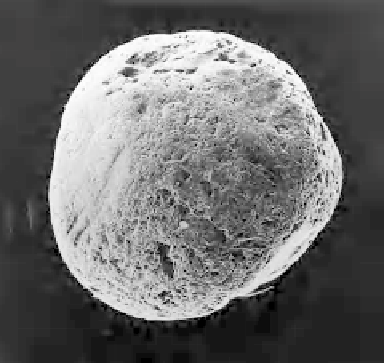Geology Reference
In-Depth Information
amorphous deformations, drop soils, injection tongues, intrusion features, and festoons
(Figure 13.5B). All these structures are probably related to the previous thawing and
freezing of ground. However, a cell-like convective movement within the active layer, as
inferred for permafrost regions today (see Chapter 6, pp. 144-152), does not adequately
explain all the structures than can be observed, and the signifi cance of any difference
between seasonal- and perennial-frost conditions is still unclear. Therefore, these struc-
tures need careful interpretation.
13.3. INTENSE WIND ACTION
A seminal study by A. Cailleux (1942) analyzed the wind-abraded form of over 3000 sand
samples collected from across Europe. It showed that sand grains that had undergone
transportation and saltation by wind are rounded and possess a matt or “frosted” appear-
ance (Figure 13.6). Furthermore, the percentage of frosted grains increases eastwards in
a broad belt extending from the lowlands of central Europe into European Russia and
reaches nearly 100% in areas immediately south of the glacial limits (Figure 13.7). The
conclusion was that intense wind action was an important characteristic of the mid-lati-
tudes during the cold periods of the Pleistocene.
Since then, other features and deposits have confi rmed the intensity of Pleistocene wind
action. These include wind-abraded rocks, eolian sand veneers, and wind-blown silt. All
are described below.
13.3.1. Wind-Abraded Rocks
Polished, eroded, and faceted pebbles and rocks occur widely in the mid-latitude
areas that surrounded the Pleistocene ice sheets. They are commonly termed ventifacts.
They are attributed to the strong katabatic and zonal winds that would have character-
ized the ice-marginal areas. As such, they are well developed in areas such as central
Poland (Dylik, 1956), southern Scandinavia (Svensson, 1983; Schlyter, 1995), northern
200
µ
m
Figure 13.6.
Rounded matt (“frosted”) sand grain caused by eolian action. The sample was
obtained from Late-Pleistocene-age dunes, Belchatow, central Poland. Photograph is supplied cour-
tesy of Dr J. Gozdzik.

